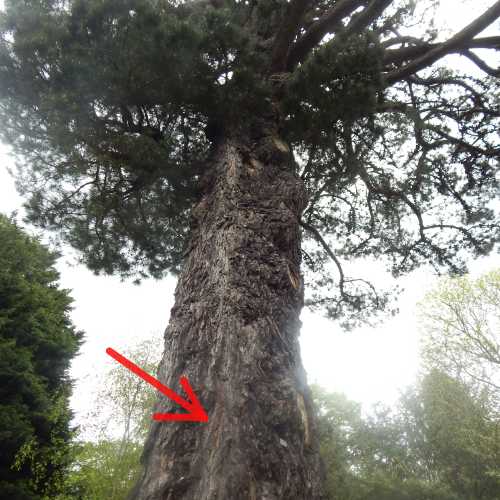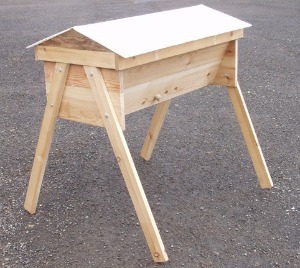Top Bar Hives
Top bar hives (or versions of them) are commonly used in Africa, but also have a fair number of users in the USA and Europe too. In recent years, there has been a growth in the Natural Beekeeping movement, which also advocates the use of top bar hives, in order to allow the bees greater freedom for building their own honey combs and doing away with frames.
Are Top Bar Hives Better For Bees?
This depends on who you ask! And what’s important for you? As the beekeeper, perhaps you want your own concerns to be addressed. However, Thomas D. Seeley in his book, The Lives Of Bees has compiled decades of research studying successful, healthy colonies in the wild to see what beekeepers can learn from hive design, and as such, the book is well worth reading by all beekeepers.
If you are keen to build your own bee hive, and want the bees to make their own comb, top bar hives are an option.
The Natural Honey Bee Nest
Honey
bees, like many wild species of bee, have to be adaptable to an extent.
Hence it is not that unusual to hear of bees making nests in chimneys
or in buildings, but what do they prefer?
 Wild honey bee nest in tree.
Wild honey bee nest in tree.
We do know, that honey bees naturally nest in the trunks of trees, or
in natural caves and hollows. Honey is stored at the top, the brood
nest below, and pollen storage is in between. They coat the inside of
the nest with propolis, and comb is fixed at the top and side. Drone
comb is located at the periphery of the brood nest. Cell size is
variable.
Perhaps the ideal bee hive from the perspective
of the honey bees, is the one that best enables them to build their combs and organise themselves - as far as possible. From a
beekeeper’s perspective, however, there are practical considerations too, such as
inspection, and removing comb, although many beekeepers advocate less interference - for example, see this article: how to monitor a bee hive.
There are broadly two types: horizontal and vertical.
Horizontal Top Bar Hive
An
example is pictured below. These typically have the shape of ‘long
boxes’ with wooden bars upon which bees build the honey combs
themselves. The bees are able to build vertical honey combs in such
hives, whilst the beekeeper is also able to remove them.

Vertical Top Bar Hives
In general, perhaps it is this
design which most resembles the vertical hollow tree trunk. An example
of such a hive is the People’s Hive (or Warre Hive), designed Abbé
Warré. This consists of a series of boxes, each one being fitted with
top bars.
Top Bar Bee Hive Construction
Both
types of top bar bee hive have the advantage of being relatively simple
to construct yourself, assuming you have some basic woodwork skills,
and both can be relatively cost effective to make. If you are intending to follow natural and/or organic beekeeping practice, you may want to be careful about any preservatives you use on the wood,
If you would like to have a go at constructing your own top bar bee hives, go to top bar bee hive plans.
More links
Interview With Dr David Heaf
Interesting views about beekeeping shared by the author of The Bee-friendly Beekeeper.
Interview with Phil Chandler
Author of The Barefoot Beekeeper, and his new book!
Beekeeping Tips
Share your wisdom for the benefit of other beekeepers here.
How To Keep Bees
An introductory page about beekeeping with lots of links to further information and free resources.
Gardening For Bees
A must for beekeepers: ensure you have good sources of pollen and nectar to provide lots of foraging opportunities for bees.
Honey Bee Deaths And Pesticides
Links to information about the controversial neonicotinoids, including research resources.
Campaigns
Read this information about various campaigns around the world to save our bees.


